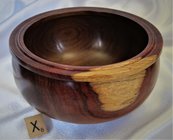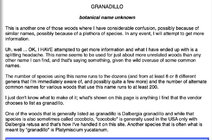I have the Eric Meier book, and use the wood database online. Granadillo is apparently a rosewood, and possibly endangered. Can't seem to find any information on this wood. What do we know about it? Where is it harvested. Is it endangered?.....etc.
-----odie-----
-----odie-----


